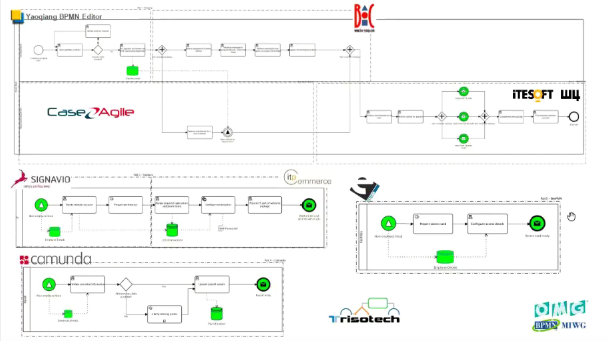BPMN Model Interchange Working Group capability demonstration 2024
BPMN MIWG capability demo is back! Again, we will be showcasing the interoperability of BPMN diagrams. This time our capability demonstration will not be a part of the Object Management Group conference, but it will be a standalone (online) event on July 18th, 2024 at 04:00 PM CEST.
You can register at: https://streamyard.com/watch/dAGGy6KFzb9Y


















